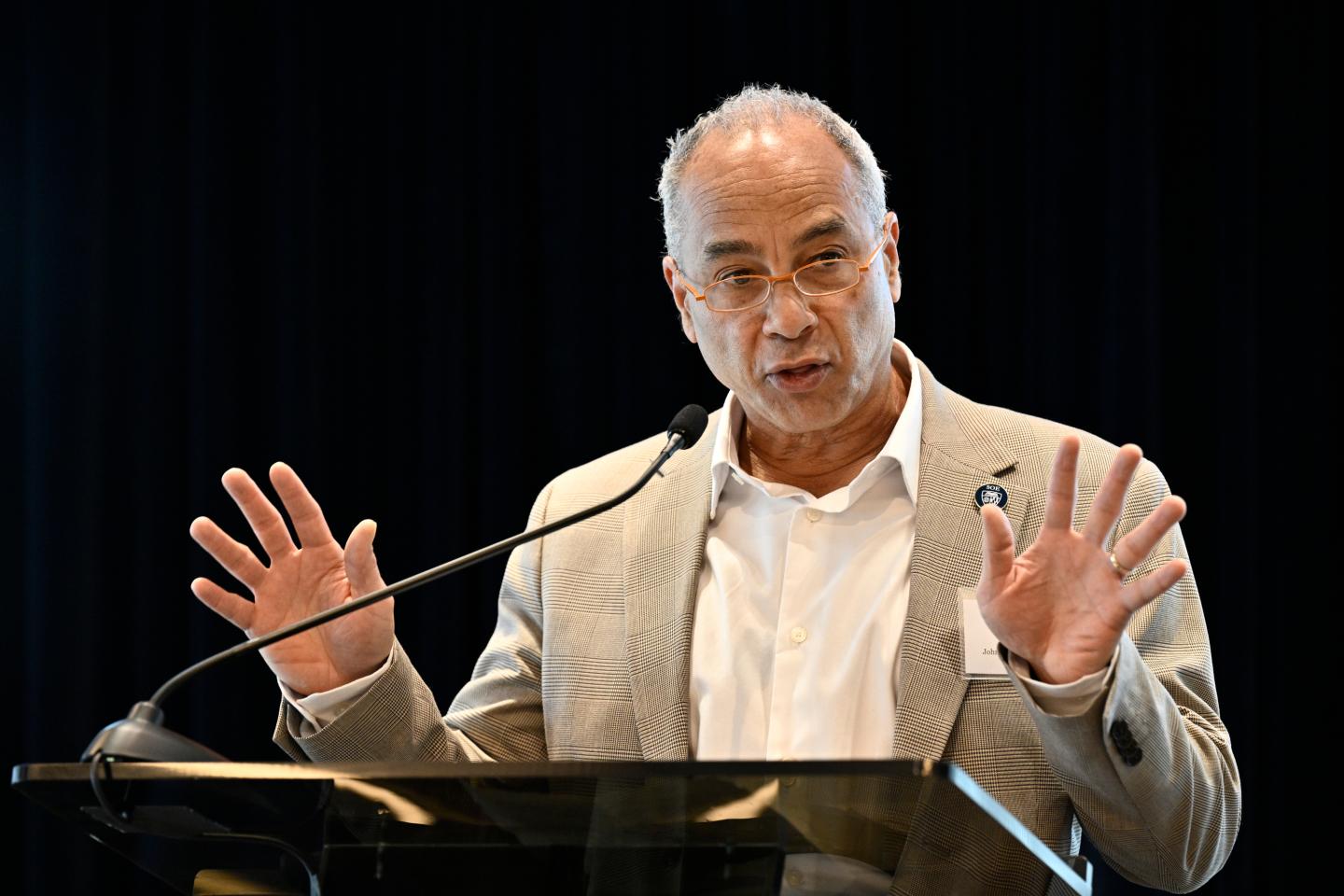Academics, policy experts, and elected officials have long watched with increasing alarm as the number of K-12 teachers has plummeted and those working in classrooms have complained of dire work conditions, increasing demands, and low pay.
On March 25 and 26 at the Johns Hopkins University Bloomberg Center in Washington, D.C., Johns Hopkins School of Education Dean Christopher Morphew co-hosted Elevating the Teaching Profession: A National Convening on the Future of Teaching with Pam Grossman, former dean of the University of Pennsylvania Graduate School of Education, and Diana Hess, dean of the University of Wisconsin–Madison School of Education.
"This has been a unique opportunity to learn from experts representing many different vantage points—academics, state officials, policy makers, foundation funders," Morphew told roughly 50 education experts gathered for the event. "Together we are united in focusing on improving how teachers are recruited and retained, and we've been able to explore innovative ideas to recruit and retain quality teachers that may benefit us all."
The problem is persistent and complex. Entering the 2023-2024 school year, roughly 45% of U.S. public schools reported that they were understaffed, according to the National Center for Education Statistics, with Maryland schools saying they had shortages in 28 subjects, including English as a second language, health science, and special education.
While teaching remains one of the largest college-educated U.S. workforces—with 5.4 million teachers nationwide—interest in the profession is waning. Interest in K-12 teaching by high school students has fallen 40% since 2010, according to Matthew A. Kraft, of Brown University, who presented. All told, prospective teachers earning licenses yearly fell by over 100,000 between 2006 and 2021. "We have our work cut out for us," said Grossman.
The coronavirus pandemic has exacerbated the situation, and five additional factors have worsened the trend: Teachers are being required to fulfill many roles; politicians have seized schools as a platform to politicize and polarize the field; school violence has skyrocketed with as many as 300 school shooting incidents occurring annually; birth rates are dropping, and parent are choosing options other than public schools; and student absenteeism is at record levels, with two-thirds of students attending public schools with high or extreme levels of absenteeism.

Image caption: Christopher Morphew
Image credit: Kaveh Sardari
Solutions require nuance because the labor market is not uniform, researchers say, but is localized by geography, subject area, and grade level, among other factors. For example, many states show enough qualified teachers in social studies or elementary education but shortages in math, foreign language, and special education. Shortages can even be highly variable within one county, researchers say.
Hence, uniform federal and state policies may be unlikely to ease such highly localized, variable shortages. Instead, researchers focus on experimental approaches at the local level to recruit and retain a diverse workforce through levers such as loan forgiveness, higher salaries, more professional support, team-teaching approaches, and increased leadership training.
The Johns Hopkins School of Education has teamed up with Baltimore City Public Schools this year on its new TeachingWell program, a master's degree residency program that provides students with full tuition support and a living stipend for STEM-related, evidence-based teacher training and a guaranteed job in an approved Baltimore-area partnership school. Graduates will receive four years of strategic support from Johns Hopkins for career development and long-term success in teaching science, technology, engineering, and mathematics.
Training and supporting teachers is key to long-term success, said Baltimore City Public Schools CEO Sonja Brookins Santelises, who delivered the event's closing remarks. Retention is the city's biggest challenge, she said, not hiring. Baltimore City teachers also report that relationships and working conditions have the biggest impact on their satisfaction, and school culture and school leaders are the biggest levers for retaining teachers. "It's the relationships," Santelises said. Morphew agreed: "We want to provide a way for teachers to have staying power."
Posted in Politics+Society
Tagged education









